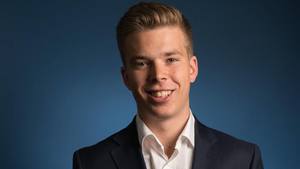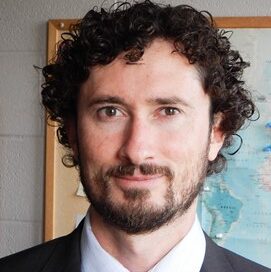THE YOUNG INVESTOR WHO’S HELPING STUDENTS SAVE BIG
Published: April 13, 2017 / Author: OZY

Javier Valverde is a winner of the 2017 OZY Genius Awards, a competition that offers 10 college age students up to $10,000 and the opportunity to bring their genius idea to life. The OZY Awards Ceremony, sponsored by JPMorgan Chase & Co, aims to support the next Albert Einstein or Mark Zuckerberg, Oprah Winfrey or Wendy Kopp, as they write a book, film a documentary, launch a new company or create the next Teach For America.To read the original story about Valverde, please visit OZY’s website.
Javier Valverde, Capital Pro, 2017 OZY Genius Award Winner
When I close my eyes, I can still hear our footsteps hitting the pavement as we run through Madrid’s western district. My dad was usually gone all week, busy traveling for his job in equity sales for a European bank. But most weekends, we’d set off on foot from our apartment in Avenida de Europa to jog through the suburb of Pozuelo. While we ran, he talked shop, telling me about strategies that companies used to attract investor interest, and the different investment vehicles. We’d make a full loop around La Casa de Campo park, and once the green open field and towering trees were behind us, we’d do a final sprint back home. He would say that he appreciated running with me because I was younger and pushed him, but in that final stretch of our race, I’m pretty sure he let me win.
I fell in love with studying abroad, and while I returned to Spain the following year to finish high school, I yearned for more international experiences. I also knew there would be more future opportunity for me in the United States. So when I was a high school senior, I began researching universities where I might study finance and became determined to get into Notre Dame. While most of my peers arrived on campus for the first time with their parents in tow, it was too expensive to have mine travel so far just to help me get settled. So I nervously set off for South Bend, Indiana, on my own, figuring that I’d have to learn to take a few risks to see the rewards.This bonding time fueled an interest in finance. So I started reading books, like The Intelligent Investor by Benjamin Graham, and learning everything I could. The hobby turned to obsession, and I soon realized that if I wanted to pursue finance as a career, I needed to learn and speak English fluently. So at the tender age of 11, I left Spain to spend five months living with a host family in Ireland, where I learned the language. My host family was relatively poor — they could only afford two meals a day and struggled to buy gas for their car at the end of each month — and this early brush with wealth inequality was eye-opening. I kept a diary during my stay — notes that I still look back on from time to time, because the experience really drove home the understanding that working hard and managing your money matters.
Back in Spain, my interest in finance never wavered, but as a young teen, I became something of a rebel, staying out late and soaking up the clubbing scene in the capital. Even in the classroom, I tended to push back on rules and the status quo, especially if I saw no basis for them. My extracurricular activities meant that I earned grades that were only slightly above average, but I wasn’t studying as much as I should have been. Then, at age 15, I went to a boarding school in Lancashire, England — it was ultimately my decision, but my parents, eager to see me on a more positive path, certainly encouraged me to go.
One thing I don’t want to leave to chance, however, is my savings for retirement. So about a year and a half ago, I decided to begin formally saving, and I reached out to a few wealth advisers. The problem? The advice stunk, because their calculations assumed I had assets and wealth — you need around $50,000 in savings to invest with a wealth investor — and I felt the fees were outrageous, especially for a student. Determined to find a better way, I decided instead to build my own platform that allows people to invest for a much lower cost. We are talking about people’s hard-earned savings, so I think there should be a lower barrier to entry — much lower — at just $1,000. And rather than charging fees that start at 1 percent of a client’s investment each year, I plan to charge 0.1 percent.
This led me to launch Capital Pro, a fintech platform with up-to-date wealth advisory experience for a fraction of the cost. Through my platform, clients pay $100 a year if they invest $100,000, rather than the standard fee of $1,000. And the best bit? There’s no minimum-balance requirement. It’s built on a proprietary algorithm named Sofia — meaning “wisdom” — and my goal is to help a large number of people save for the future in a better, more cost-effective way.
With my OZY Genius Award money, I plan to hire a developer to help with coding and security, and invest in market data to guide me in making informed business decisions. Another goal? To travel and meet wealth advisers and regional banks to potentially license the product and grow the platform. I’ve already learned that having a head for finance doesn’t necessarily make me a fine salesman — that’s the hardest part.
One of the keys to addressing wealth inequality is that savings grow much faster when you can invest in high-return assets, but you have to have the means to pursue such investments. I want to break down the barriers and open the doors of investment opportunity to everyone.




